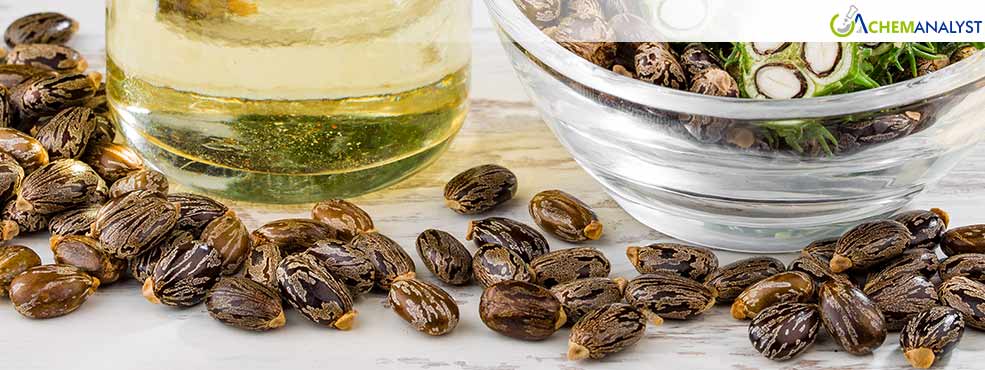Welcome To ChemAnalyst

During the entire month of April, castor oil market continues to experience a significant drop in import and export prices, with market experts further anticipating this bearish trend in the upcoming months. After April's notable price decline, market indicators suggest the weakness in castor oil pricing will extend well into the summer, creating both challenges and opportunities across the supply chain.
Initially, with respect to the market trade side, recently, global castor oil production has substantially outpaced the necessity and consumption of castor oil, creating a constant supply glut across the market and thereby supporting a peristent downward pressure on international prices. While some trade reports also state that this oversupply situation shows no signs of abating in the near term, favorable growing conditions in key producing regions—particularly across the Indian market—are expected to support high output of castor seeds, thereby ensuring higher availability for castor oil production among end-users.
As a result, the current castor oil market dynamics reflect a fundamental imbalance that cannot be quickly resolved. Owing to the heightened production capacity in the past month, compared to the modest demand growth, a structural oversupply situation continues to persist, affecting market trading dynamics with lesser profit margins for suppliers.
With respect to the import market sentiments, downstream quotations from the end-user sectors across the U.S. castor oil market continued to remain weak even in April. The cosmetic, pharmaceutical, and industrial lubricants sectors continued to focus on adopting more conservative purchasing strategies. In response, many castor oil suppliers reduced their inventory levels by offering discounts and sought lower-cost alternatives or reduced new purchase orders.
Moreover, adding to this, the continuous drop in the domestic market for castor oil coincides with the increasing interest in synthetic substitutes and other bio-based alternatives. These often offer comparable performance characteristics but at more competitive prices, further supporting the downward trend in castor oil demand as traders were actively seeking to clear their inventories to avoid higher storage costs.
At the same time, Concurrently, aggressive export pricing by major producing countries further puts pressure on overall castor oil market trading sentiments. Major exporting countries like India, which control the global castor oil supply, have been following aggressive pricing strategies to keep their market share intact. With strong production and positive exchange rates, Indian suppliers have inundated the global market with castor oil at reduced prices.
This trend favored importing countries, especially the U.S., since buyers had opportunities to buy castor oil at favorable prices. Nevertheless, sentiments in market trading remained subdued with dealings happening only on a need basis.
Also, all the forecasts indicate ongoing price weakness through Q2 and possibly into Q3 2025. With continuous oversupply, weakened demand, heightened export competition, and efficient logistics collectively creating powerful headwinds against any meaningful price recovery in the castor oil market in the near term.
Market participants are urged to implement appropriate risk management policies as they remain alert to potential disruptive factors like weather patterns in production regions or unexpected shifts in industrial demand patterns that could alter the current trajectory of the castor oil industry.
We use cookies to deliver the best possible experience on our website. To learn more, visit our Privacy Policy. By continuing to use this site or by closing this box, you consent to our use of cookies. More info.
